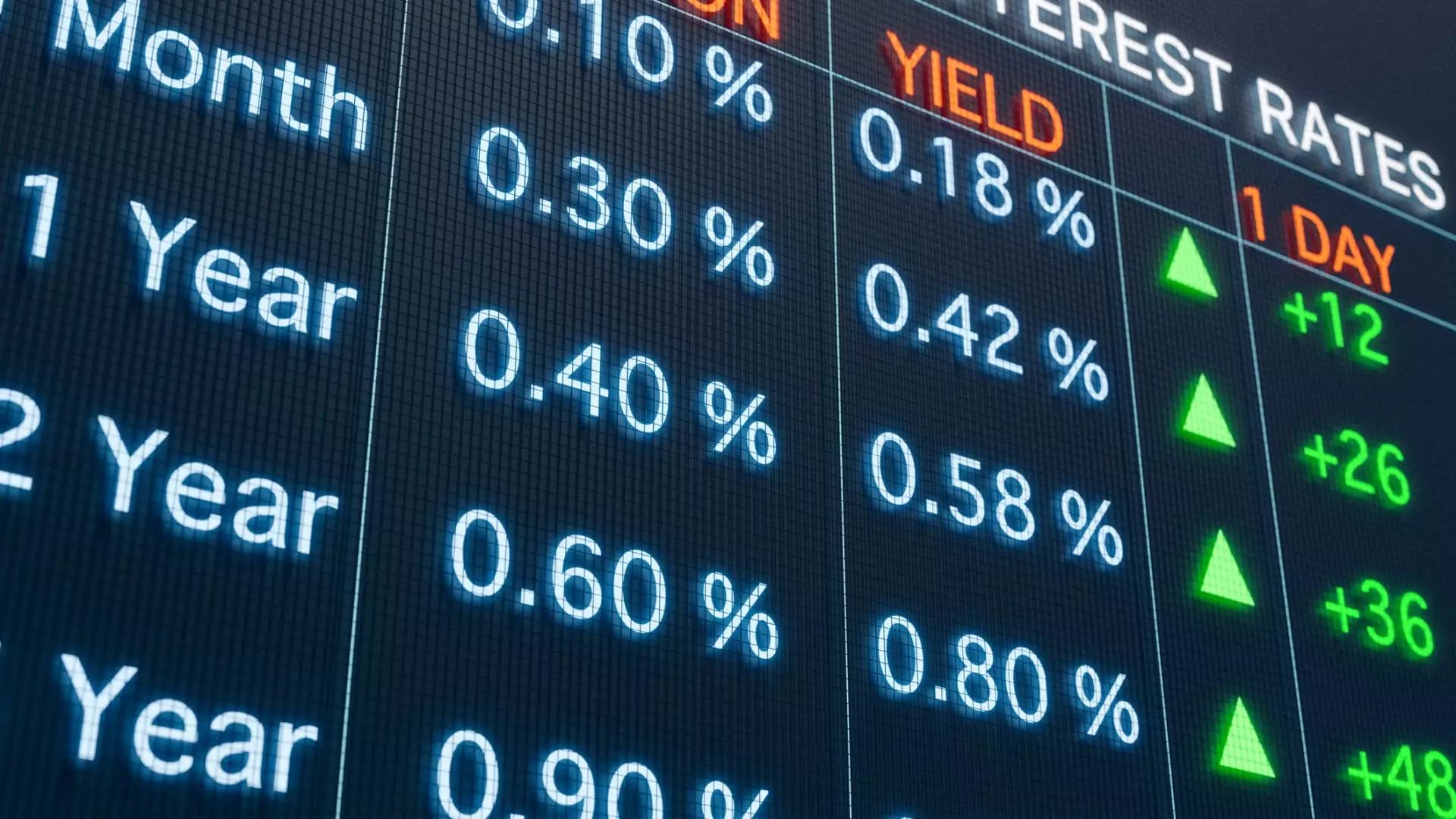In a surprising twist of market sentiment, long-term Treasury yields have surged despite the Federal Reserve’s decision to cut interest rates—a move typically associated with easing economic stress and encouraging growth. This disconnect reveals a deeper undercurrent of uncertainty that conventional economic signals often conceal. While the Fed attempts to reassure markets with a modest rate reduction, bond investors are reacting as if the economy’s fragility is more pronounced than policymakers admit, warning us that the attempt at economic stabilization may be misguided or even counterproductive.
The key takeaway from this discordance is that bond markets are not merely reacting to monetary policy but are signaling a profound mistrust in the central bank’s narrative of steady growth and manageable inflation. The rise of the 10-year Treasury yield from below 4% to over 4.1%, and the 30-year yield climbing towards 4.76%, underscore investor skepticism—not optimism. These yields affect everything from mortgage rates to corporate borrowing costs, indicating that reckoning with rising borrowing expenses is unavoidable, and that the supposed comfort of a ‘pause’ in rate hikes is superficial at best.
Bond Markets’ Hidden Message: Fear, Not Confidence
At its core, the bond market is a barometer for expectations about the future. When yields increase despite rate cuts, it suggests that investors believe the economy faces lingering, perhaps unseen, risks—risks that threaten to destabilize consumer confidence, affect employment, and dampen growth. The classic view that rate cuts stimulate economic activity ignores the complex reality that markets are often forward-looking and sensitive to subtle shifts in global and domestic fundamentals.
Market experts like Peter Boockvar interpret this move as “selling the news”—investors doubt the central bank’s intentions or long-term commitments. Long-term bond traders seem to be signaling that lowering rates now could be a premature attempt to prop up an economy already at risk of overheating or facing underlying inflation pressures. The fact that bond yields are rising in the face of rate cuts simply exposes the market’s skepticism about whether these measures will be sufficient or truly aimed at addressing the roots of economic vulnerabilities.
Moreover, the markets are implicitly questioning the Fed’s ability to control inflation effectively while simultaneously supporting growth. The updated projections indicating slightly higher inflation expectations for the coming year suggest that the Fed’s tools—particularly rate cuts—may not be enough to restore balance. This creates a dissonance: The central bank appears to be easing, but market signals show that concerns over inflation, debt sustainability, and economic stability remain unresolved.
The Risks of Misguided Easing and Its Consequences
The idea of an easier monetary policy, especially when inflation still runs above target levels, may be a case of “taking the eye off the ball.” Historically, complacency during periods of low or falling yields has often led to the opposite of the desired outcome—stepping back from aggressive rate hiking can inadvertently sow the seeds of future crises. Easing measures, when not carefully calibrated, risk inflating asset bubbles, increasing debt burdens, and ultimately undermining financial stability.
For example, rising longer-term yields translate into higher mortgage and consumer borrowing costs. The recent uptick in mortgage rates following the Fed’s rate cut underscores how fluctuating bond yields impact hardworking Americans dreaming of homeownership. The cautionary tale of Lennar’s weak Q3 earnings and dim outlook reveals a housing market hampered by high interest rates, not a robust economy. The disconnect between the stock market’s record highs and the housing market’s struggles underscores the dangers of over-reliance on market optimism driven by illusions of central bank support.
The risk is that investors and policymakers alike may cling to the belief that lower interest rates are an unquestionable path to sustained growth. But history warns against this complacency. When yields rise amidst these rate cuts, it signals that markets are bracing for the fallout of prolonged uncertainty—one where continued low rates may fail to prevent deeper economic issues, such as stagnant growth, rising inequality, or debt crises.
The International Dimension and the Illusion of Control
Another layer of complexity is the global interconnectedness of financial markets. International trends show similar movements—rising yields in major economies—indicating that the U.S. is not isolated. Central banks globally are grappling with inflation, growth worries, and the challenge of balancing monetary policy. These international signals further diminish the effectiveness of unilateral U.S. rate cuts, casting doubt on the assumption that domestic policy alone can steer the economy clear of turbulence.
Furthermore, the bond market’s reaction to falling unemployment filings hints at a troubling paradox. While low unemployment suggests economic strength, it may also obscure underlying vulnerabilities, such as underemployment, wage stagnation, or increasing income inequality. As bonds react negatively to these signals, it becomes evident that the market perceives a disconnect between headline economic indicators and the real health of the economic landscape.
The rising long-term yields amidst a supposed easing cycle expose a fundamental truth: markets are cynics that see through the veneer of central bank assurances. They understand that the economy’s vulnerabilities are not being adequately addressed and that the risks of complacency are high. The bond yields are not just numbers—they are a clarion call warning us that in the quest for growth and stability, we may be setting ourselves up for a more tumultuous future.

